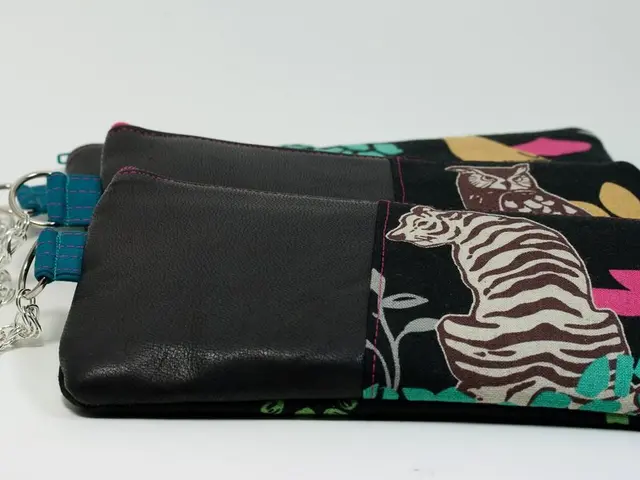Pollution of a significant river basin due to activities in India's leather industry
====================================================================================
The Supreme Court's ruling on pollution from tanneries in Vellore, Tamil Nadu, has been significant but only partially effective in addressing environmental damage to the Palar River, local communities, and groundwater.
The Court held the tanneries accountable for "irreversible damage" and ordered fines and compensation, as well as the establishment of an environmental commission to oversee compliance. However, despite these judicial measures, enforcement remains a challenge.
The Tamil Nadu Pollution Control Board (TNPCB), the main local regulatory authority, has been criticised for inadequate action, mostly issuing warnings without strict penalties, allowing continued pollution. The pollution has severely affected local agriculture by rendering about 35,000 hectares of land infertile and contaminating groundwater up to 10 feet deep, causing hardship for farmers and residents dependent on the river for drinking and irrigation.
The Palar River, a vital drinking water source for 50 villages and 30 towns, flows 222 kilometres through Tamil Nadu before draining into the Bay of Bengal near Chennai. Around 35% of India's leather export earnings come from the river basin, where 449 tanneries are located, generating about INR 15 billion (US$172 million) annually and employing 50,000 people.
The Court's orders to compensate affected families and adopt the “polluter pays” principle represent progress, and the new environmental commission has begun damage assessments. Yet, ongoing enforcement gaps and the scale of discharge—about 20 million litres of largely untreated effluent daily—mean the environmental and public health impacts persist.
The pollution has global implications, as many of the tanneries supply leather to international markets. The Palar River has high levels of metal pollution, particularly chromium, in its water, sediment, and vegetation, due to night-time dumping of wastewater by residents. Inhalation of chromium VI is harmful to human health, contributing to respiratory diseases, skin ulcers, kidney malfunction, and even lung cancer.
Chromium VI, a carcinogenic form of chromium, has been detected in leather products from Tamil Nadu at levels exceeding legal limits. Elevated chromium levels have been found in soil, water, vegetation, and even animals in the region, posing risks to both ecosystems and the food chain.
Raja, a resident in Santhipuram, reports suffering from respiratory problems, while his daughter, 16, has developed kidney stones severe enough to require surgery, allegedly due to contaminated drinking water. A separate study on groundwater in Vellore revealed alarming levels of heavy metals, indicating "extremely high health risks".
The TNPCB official admits that changing the pollution situation will take a long time. A study found that over 15,000 hectares of land in the region is affected by high total dissolved solids, and nearly 11,000 hectares of previously fertile farmland has lost its productivity.
The Loss of Ecology Authority (LEA), a government body formed to address environmental damages, compensated Tamil Nadu farmers for water pollution caused by tanneries between 1998 to 2005, but no compensation has been granted since then, and the LEA was dissolved in 2016.
In summary, the Supreme Court has taken landmark steps to address tannery pollution in Vellore, but the effectiveness is limited by enforcement weaknesses, continuing environmental degradation, and the socio-economic dependence on the leather industry. The ruling raised awareness and fostered regulatory mechanisms but has not fully stopped the pollution or reversed damage to the Palar River ecosystem and dependent communities.
- The Supreme Court's ruling, which emphasizes the "polluter pays" principle, aligns with Sustainable Development Goal (SDG) 12: Responsible Consumption and Production, underscoring the need for environmental policy changes in industries like manufacturing and tanning, particularly when it comes to water security and health-and-wellness.
- The science and environmental-science communities must collaborate to develop sustainable solutions for the leather industry, addressing the environmental impacts of chromium waste, while maintaining the economic importance of this sector to Tamil Nadu's economy, which generates about INR 15 billion (US$172 million) annually and employs 50,000 people.
- To facilitate such a transition, the finance sector plays a crucial role by investing in green and sustainable manufacturing processes, helping these industries move away from practices harmful to the environment and public health.
- In the long term, implementing effective water security measures can not only protect local communities, groundwater, and the Palar River ecosystem but also encourage new industries that prioritize environmental and health-and-wellness concerns, fostering a more sustainable future for Vellore and similar regions.








